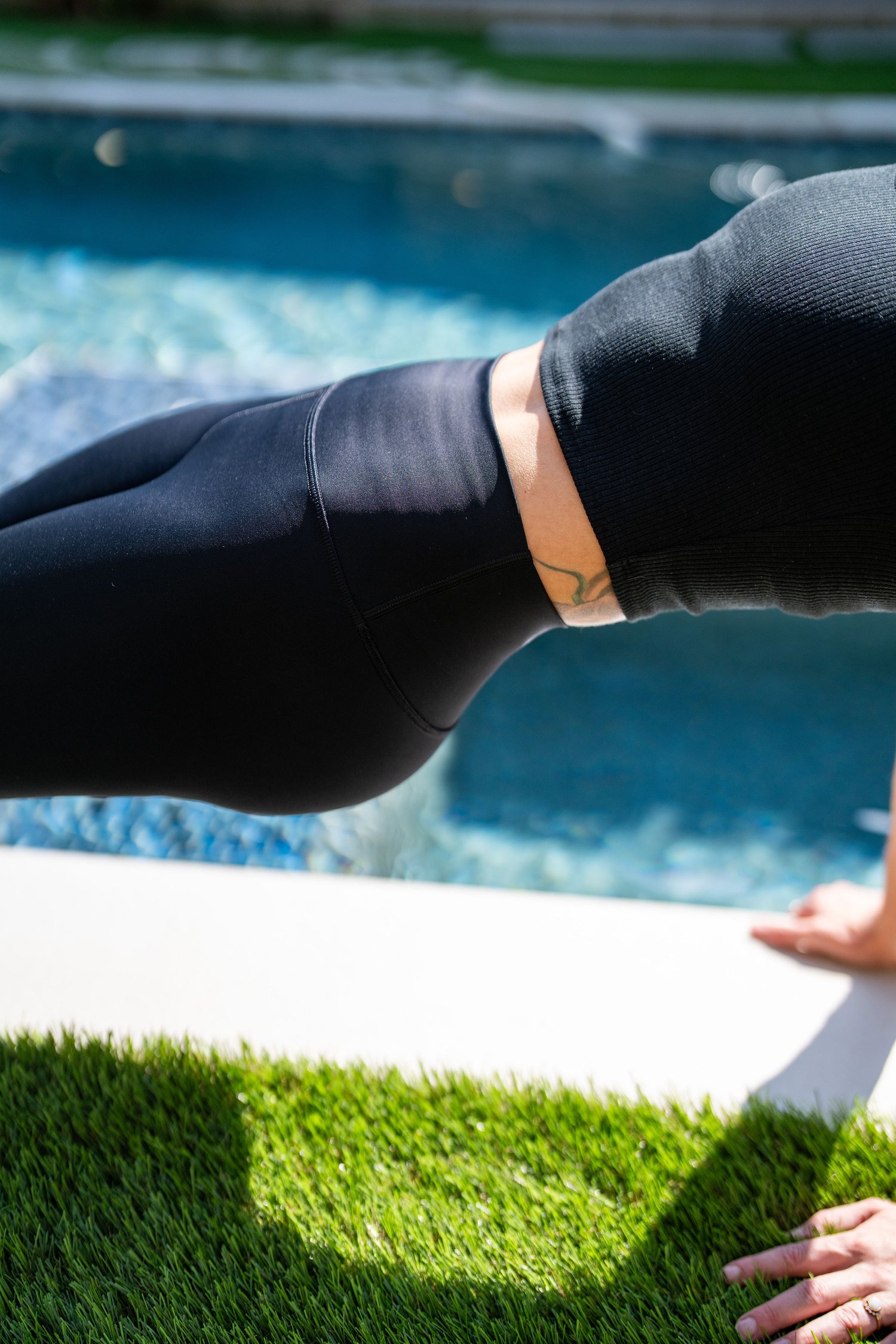Blog post by Gabrielle Saran
Why does my vagina make noise during Pilates?
Pressing into your feet, you roll up your spine into a beautiful bridge. You feel strong and connected. Then, as you peel your spine back down one vertebra at a time, just as your tailbone hovers an inch off the mat… your vagina decides to chime in. Yep, you just queefed.
What exactly is queefing?
Queefing is simply vaginal flatulence. Unlike traditional flatulence, it’s odorless because it’s just air that’s been sucked into the vaginal canal and pushed out when pressure changes. It can happen during sex, exercise, or movements where the pelvis is higher than the chest—essentially anytime air has an easy path in and out.
Who is more prone to queefing?
First, let’s clear the air (pun intended): queefing is completely normal and not harmful to your health. However, it can sometimes signal issues with the pelvic floor—either it’s too tight or too weak. Women who have experienced pregnancy and childbirth (whether vaginally or via c-section) are often more prone to queefing due to the impact on pelvic floor muscles.
Other factors include pelvic organ prolapse, constipation, and even hormonal fluctuations during different stages of your menstrual cycle.
What causes queefing?
A TIGHT PELVIC FLOOR: Overly tight pelvic floor muscles can act like a suction, drawing air into the vaginal canal. When that air is released, it produces sound.
A WEAK PELVIC FLOOR: Weak muscles may allow air to flow in more freely and then escape when intra-abdominal pressure increases, such as during exercise.
Both tight and weak pelvic floor muscles struggle to properly relax and contract. An optimally functioning pelvic floor moves seamlessly with your breath, allowing small amounts of trapped air to escape silently.
How to reduce the risk of queefing?
Before transitioning into a position that tends to invite air in (like a bridge or shoulder stand), try this technique:
1. INHALE TO RELAX: Focus on relaxing your pelvic floor muscles with your inhale. This helps release any trapped air gently and silently.
2. EXHALE TO CONTRACT: Just before you move, engage your pelvic floor by exhaling, creating a “closing” effect that minimizes air being pulled in.
While this method may not work every single time, it’s an excellent way to connect with your breath and build awareness of your pelvic floor’s movements.
How can Pilates help?
Pilates is an amazing tool for strengthening and connecting with your pelvic floor, which is part of your core. Through targeted movements and breath-work, Pilates can help you learn to contract and relax these muscles properly. Check out our workouts to help with this!
That said, Pilates often focuses on strengthening, so if you know your pelvic floor tends to be too tight, balance it out with pelvic floor stretches and release work after your workout.
If you’re experiencing frequent queefing or other pelvic floor issues, it’s always a good idea to consult a pelvic floor specialist. They can provide personalized guidance to address any dysfunction and help you achieve better pelvic health.
ATLANTA LOCALS: NEED HELP?
If you’re in Atlanta, check out For those living in Atlanta, check out our favorite pelvic floor specialists Atlanta Pelvic Health.
A final note
Don’t stress too much about a little air escaping during your workout—it happens to almost everyone! If you’re in a group Pilates class, trust that your instructor will cue right through it like a pro. And if it happens during a private session, take the opportunity to discuss the pelvic floor with your instructor. You might learn something that helps prevent future “musical moments.”
Ready to work on that core? Try hundreds of our workouts for free, and start feeling great today!
